f ha hyaluronic acid reviews
The full details of the efficacy analyses are included in our Evidence Report [7]. In brief, 18 randomized trials reported on the effects of HA compared to sham-injected placebo control, another HA, or some other active treatment on function, as measured by the Western Ontario-McMaster Universities Arthritis Index (WOMAC [17]), the Lequesne Index [18], the Knee Injury and Osteoarthritis Outcomes Score (KOOS [19]), or Activities of Daily Living, among patients whose average age was 65 or older. Details of included studies and their risk of bias assessment are included in Additional files 2 and 3. Pooled analysis of ten sham-injection, placebo-controlled, assessor-blinded trials showed a standardized mean difference of −0.23 (95 % CI −0.45 to −0.01) (Fig. 2), which significantly favored HA at 6 months follow-up [20–29]. Although our review found that functional outcomes were improved by intraarticular HA injection, the durability of this effect could not be assessed beyond 6 months. We judged the strength of evidence for the function outcome as low because the trials tended to be small, they had moderate risk of bias (often failing to report adequate methods for recruitment or concealment of allocation) (Additional file 3: Table S3), function was usually not a primary outcome, and results were inconsistent.
Hyaluronic acid injection therapy for osteoarthritis of the knee: concordant efficacy and conflicting serious adverse events in two systematic reviews
The prevalence of knee osteoarthritis (OA)/degenerative joint disease (DJD) is increasing in the USA. Systematic reviews of treatment efficacy and adverse events (AEs) of hyaluronic acid (HA) injections report conflicting evidence about the balance of benefits and harms. We review evidence on efficacy and AEs of intraarticular viscosupplementation with HA in older individuals with knee osteoarthritis and account for differences in these conclusions from another systematic review.
Methods
We searched PubMed and eight other databases and gray literature sources from 1990 to December 12, 2014. Double-blind placebo-controlled randomized controlled trials (RCTs) reporting functional outcomes or quality-of-life; RCTs and observational studies on delay/avoidance of arthroplasty; RCTs, case reports, and large cohort studies and case series assessing safety; and systematic reviews reporting on knee pain were considered for inclusion.
A standardized, pre-defined protocol was applied by two independent reviewers to screen titles and abstracts, review full text, and extract details on study design, interventions, outcomes, and quality. We compared our results with those of a prior systematic review and found them to be discrepant; our analysis of why this discrepancy occurred is the focus of this manuscript.
Results
Eighteen RCTs reported functional outcomes: pooled analysis of ten placebo-controlled, blinded trials showed a standardized mean difference of −0.23 (95 % confidence interval (CI) −0.45 to −0.01) favoring HA at 6 months. Studies reported few serious adverse events (SAEs) and no significant differences in non-serious adverse events (NSAEs) (relative risk (RR) [95 % CI] 1.03 [0.93–1.15] or SAEs (RR [95 % CI] 1.39 [0.78–2.47]). A recent prior systematic review reported similar functional outcomes, but significant SAE risk. Differences in SAE inclusion and synthesis accounted for the disparate conclusions.
Conclusions
Trials show a small but significant effect of HA on function on which recent systematic reviews agree, but lack of AE synthesis standardization leads to opposite conclusions about the balance of benefits and harms. A limitation of the re-analysis of the prior systematic review is that it required imputation of missing data.
Backed by the Good Housekeeping Seal and infused with hyaluronic acid plus line-smoothing peptides, retinol, and antioxidant vitamin C, No7 earned the top score in the GH Beauty Lab’s serums test for smoothing skin’s texture. It also received high marks for improving firmness and texture and diminishing pores. Described as “lightweight” by many testers, the serum made skin “look younger” and wrinkles “less visible,” they reported.
12 Best Hyaluronic Acid Serums to Hydrate Skin, According to Skincare Experts
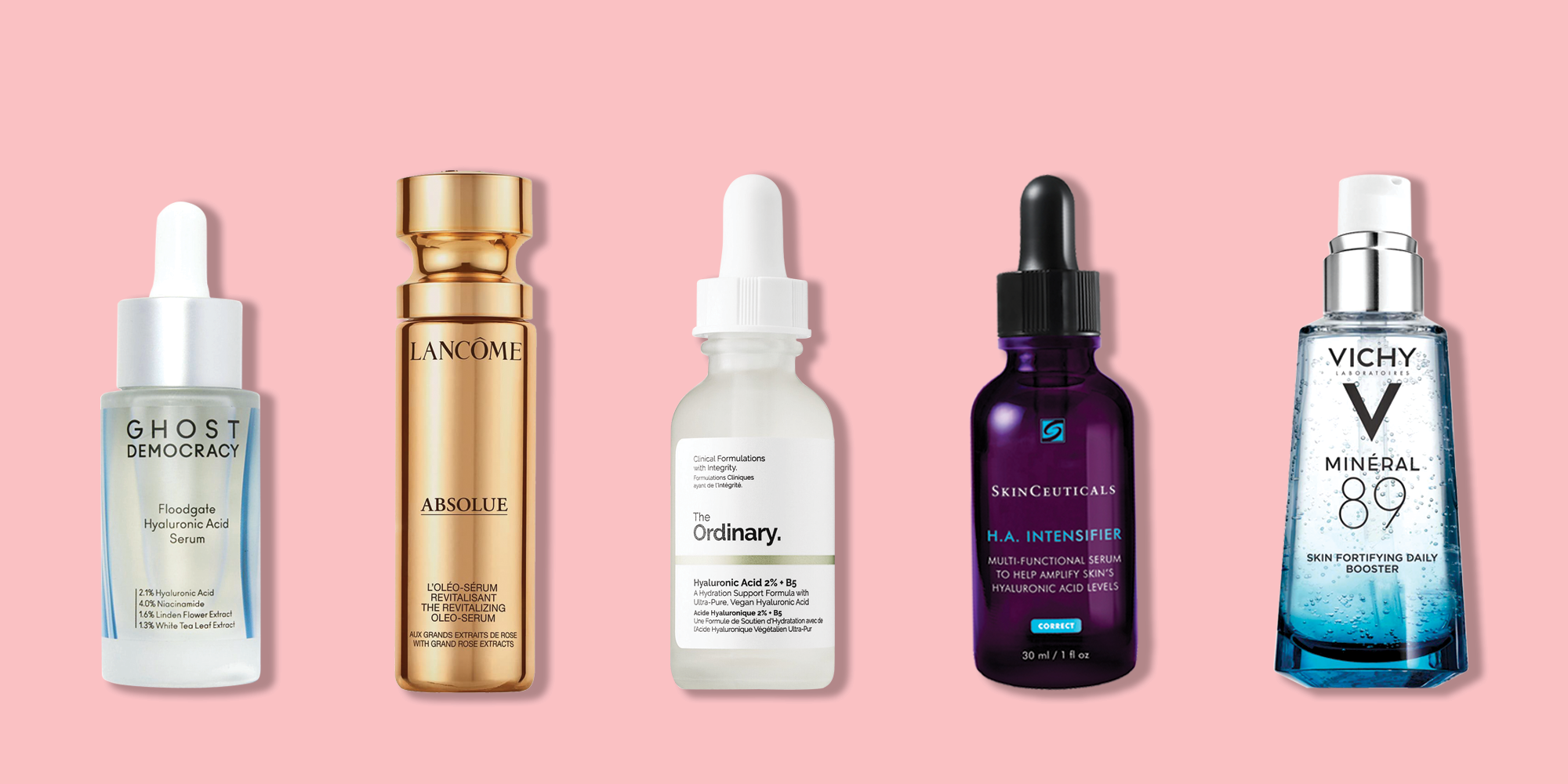
Currently riding a wave of popularity, hyaluronic acid (also known as HA) is one of the gold standard ingredients for hydrating dry skin. “A sugar molecule that naturally occurs in the body, hyaluronic acid is used in skincare products for its moisturizing benefits,” explains Good Housekeeping Institute Beauty Lab Director Birnur Aral, Ph.D. Often listed as sodium hyaluronate on product ingredients lists, its effects can be both immediate and long-term.”The ingredient conditions skin and works as a humectant that draws moisture into skin,” says GH Beauty Lab senior chemist Sabina Wizemann. “It helps combat dryness and dullness, and restores suppleness.”
Hyaluronic acid can also have anti-aging effects, thanks to its skin-plumping properties. “It acts like a sponge that absorbs water, adding volume to skin,” says says Mona Gohara, M.D., a dermatologist at Yale School of Medicine in New Haven, CT. Serums, which are lighter-weight in texture than moisturizers like lotions or creams, deliver the hydrating benefits of hyaluronic acid without heaviness and can be layered underneath other leave-on skincare products morning, evening, or both.
Depending on the specific product formulation itself, hyaluronic acid can work on all skin types, from oily skin to dry and sensitive skin, and can help reduce side effects such as irritation from ingredients like vitamin C and retinol. Give skin its first defense against dryness with the best hyaluronic acid serums, including Good Housekeeping Beauty Lab scientist top-tested and dermatologist-recommended formulas, Good Housekeeping Seal stars, editor’s picks, and best-sellers.
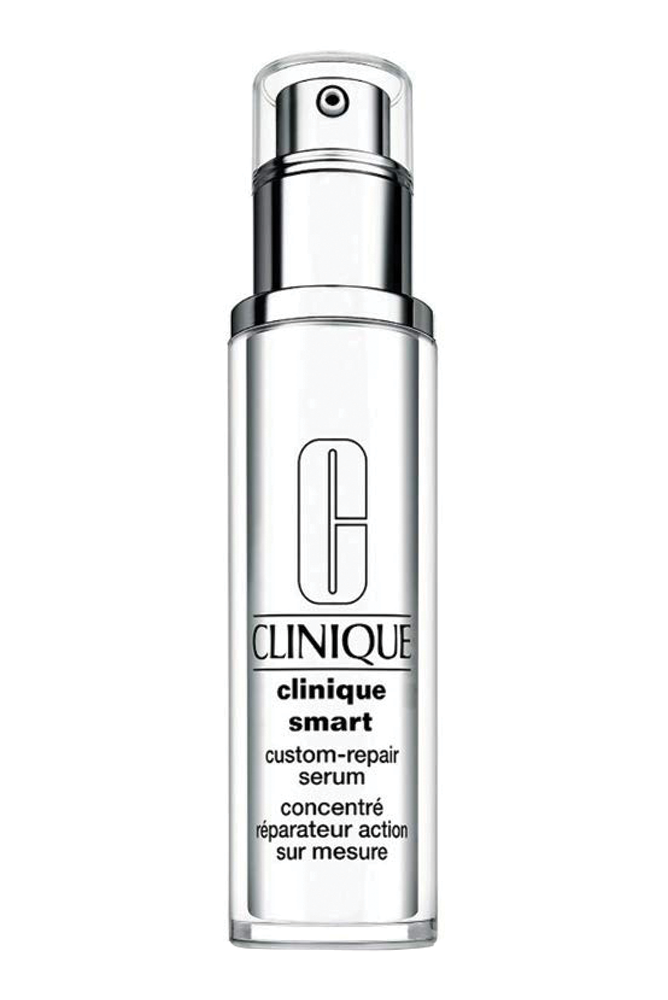
The winner of the GH Beauty Lab’s anti-aging serums test, Clinique’s formula made with hyaluronic acid scored points for softening skin, firming, brightening, evening tone and minimizing pores and brown spots. It was best at boosting firmness, by 24% per measurements with the Lab’s Cutometer device, and reduced the look of pores and brown spots 7%. And it goes on smooth, too: 100% of testers agreed the formula had a nice texture.

From the cult favorite brand The Ordinary, this serum made with a high concentration of hyaluronic acid (2%!) is a best-seller at Sephora— and less than $10. “This made my dry, crepey skin go away in two days,” one reviewer marveled. “My skin looks and feels like a million bucks.”

Backed by the Good Housekeeping Seal and infused with hyaluronic acid plus line-smoothing peptides, retinol, and antioxidant vitamin C, No7 earned the top score in the GH Beauty Lab’s serums test for smoothing skin’s texture. It also received high marks for improving firmness and texture and diminishing pores. Described as “lightweight” by many testers, the serum made skin “look younger” and wrinkles “less visible,” they reported.

With a special mix of five types of hyaluronic acid, this SkinMedica serum “delivers visible results in minutes,” says Jeanine Downie, M.D., a dermatologist at Image Dermatology in Montclair, NJ. It’s dermatologist-backed for its skin-softening effects: “The formula plumps skin immediately and increases volume long-term,” Dr. Gohara says.
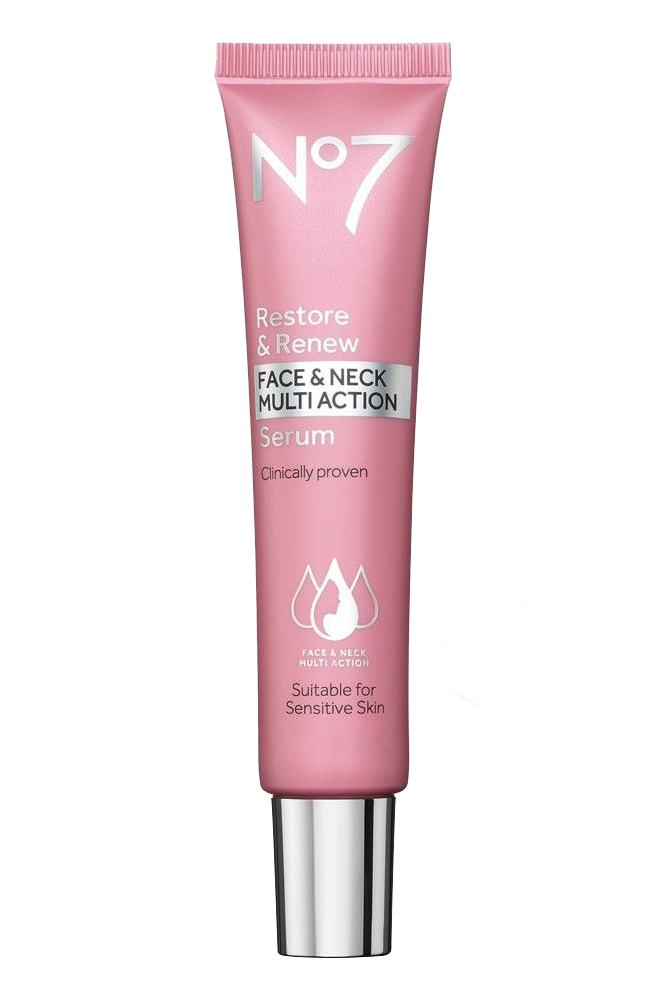
The winner of the GH Beauty Lab’s anti-aging neck treatments test and a Good Housekeeping Seal star, this No7 serum with hyaluronic acid can also be used on the face. In Lab testing, it was a heavy hitter for firming, showing the most improvement in tightening and lifting skin on the neck in before-and-after images taken with high-resolution professional photography over 12 weeks of use. Testers rated it the fastest- absorbing and most appealing in texture as well as least irritating. “This made my skin more firm,” one said. “I like everything about it,” another raved.
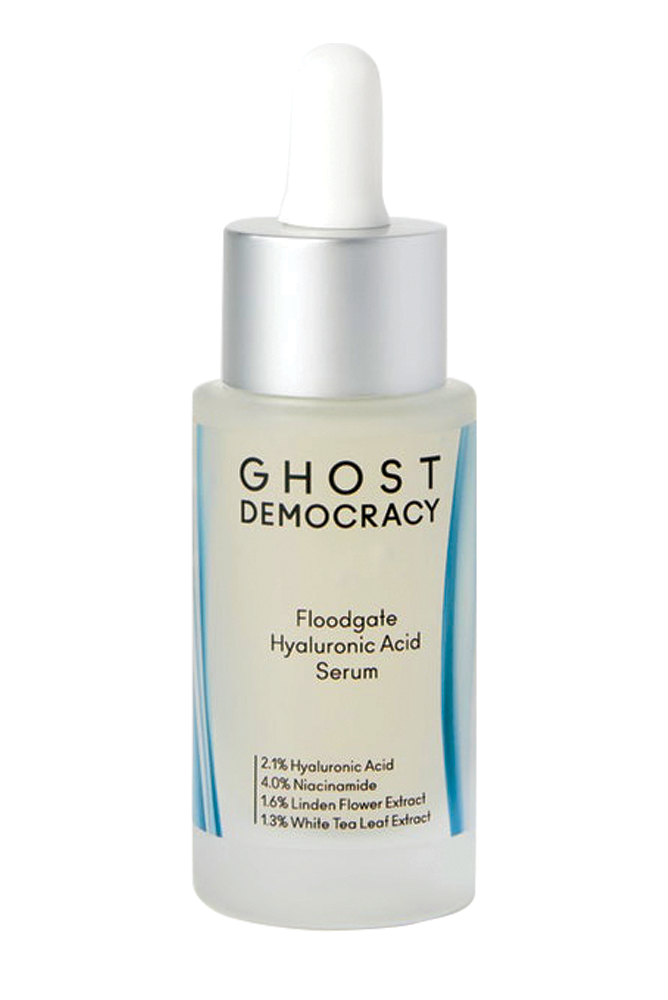
This Ghost Democracy hyaluronic acid serum is a favorite of GH Beauty Lab senior chemist Sabina Wizemann, who has sensitive skin. “It has 2.1% HA, one of the highest concentrations I’ve seen, and 4% niacinamide to strengthen the skin’s barrier,” she says. “I found it to be an excellent base for a moisturizer and noticed my skin looking a little plumper.” Plus, “niacinamide tends to irritate my skin, but I haven’t noticed discomfort from this,” Wizemann notes.
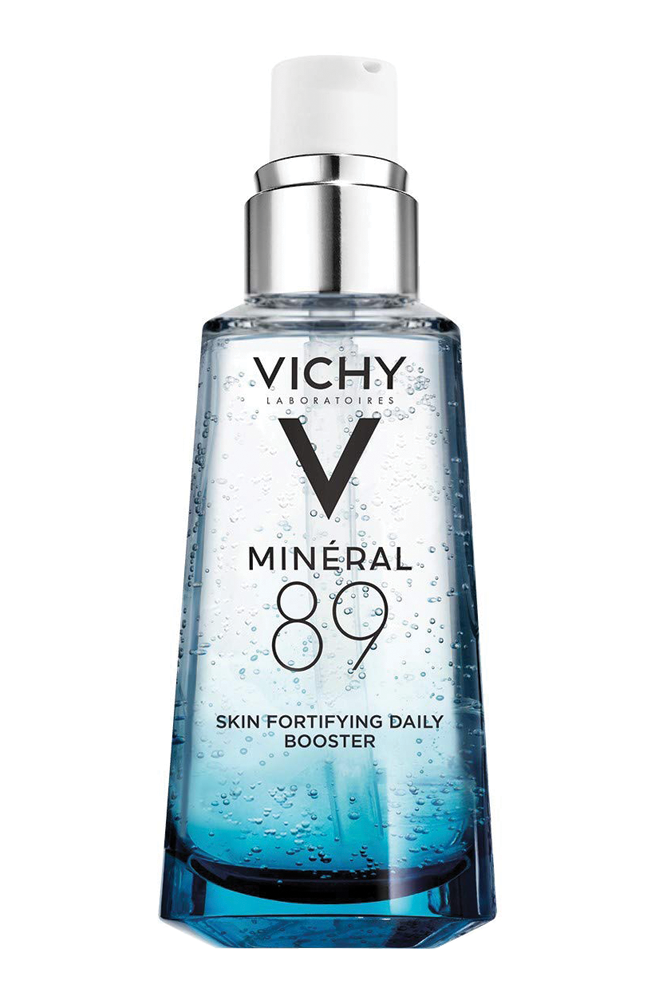
GH’s beauty editor tested this gel-like Vichy hyaluronic acid serum on her dehydrated, irritated skin during an eczema breakout in winter. “It instantly soothed and didn’t cause any reaction,” she noted. “My skin felt quenched and comfortable after applying, rather than painfully parched.”
The viscosity of hyaluronic acid may also have positive effects on the cartilage, bone, and other surrounding tissues in the knee.
Hyaluronic Acid Injections: Approved Use and Brand Names
The US Food and Drug Administration (FDA) has approved the use of hyaluronic acid injections for knee osteoarthritis. The FDA also states that this injection must be used after other treatments such as physical therapy and the use of pain-relieving medications have been tried and failed. 7 Off-label use of hyaluronic acid injections may be considered by some doctors in treating osteoarthritis of the ankle, shoulder, and thumb joints.
Depending on the pharmaceutical brand, there can be one (Synvisc One), three (Euflexxa, Synvisc), four (Orthovisc), or five (Hyalgan) injections of hyaluronic acid for knee osteoarthritis. For brands using more than one injection, each shot is given once a week (for 3 to 5 weeks). 7 Generic formulations are also available.
Methodological characteristics of included Meta-analyses were presented in Table 4. All included meta-analyses only included RCTs and/or quasi-RCTs. The evidence degree of each meta-analysis was Level II. REVMAN, STATA, SAS, R and Comprehensive Meta-analysis software were used in meta-analyses. Subgroup and sensitivity analysis were used in some of the included studies. None meta-analysis used GRADE in their study. The AMSTAR results with each question of included meta-analysis were shown in Table 5. The average score of AMSTAR of included meta-analyses was 7.25, ranging from 4 to 11. All included meta-analyses reported that there was no conflict of interest in making meta-analysis. One meta-analysis conducted by Bellamy et al. 25 was the highest quality study.
Results
Literature search
Thirty-three titles and abstracts were preliminarily identified with the first search strategy, of which 12 of the published meta-analyses 6,9,10,11,12,20,21,22,23,24,25,26 ultimately met the eligibility criteria (Fig. 1). Two studies 27,28 were excluded because they conducted network meta-analysis among each kinds of HA. Three meta-analyses 29,30,31 were excluded because they were performed to compare the efficacy and safety of HA with corticosteroids. Three studies, including primary studies in ankle/hip joints, were also excluded 32,33,34 .
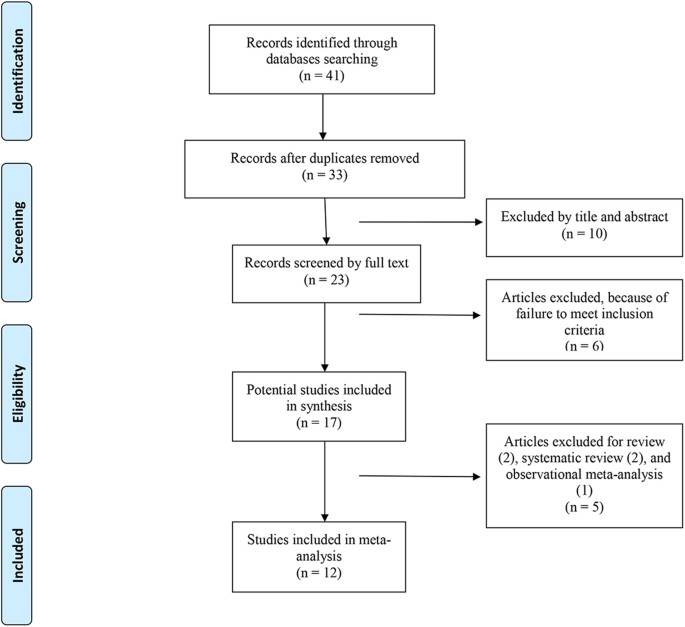
Flowchart of the study selection process.
Table 1 presented the characteristics of included meta-analysis. The number of original studies in meta-analysis varied from 5 in that study published in 2006 to 89 that published in 2012 (Table 2). All included meta-analyses conducted qualitatively data synthesis.
Search methodology
The literature search methodology which was adopted by included meta-analysis was present in Table 3. Most of the databases that the included studies searched were Medline, Embase or Cochrane database.
Methodological quality of included meta-analyses
Methodological characteristics of included Meta-analyses were presented in Table 4. All included meta-analyses only included RCTs and/or quasi-RCTs. The evidence degree of each meta-analysis was Level II. REVMAN, STATA, SAS, R and Comprehensive Meta-analysis software were used in meta-analyses. Subgroup and sensitivity analysis were used in some of the included studies. None meta-analysis used GRADE in their study. The AMSTAR results with each question of included meta-analysis were shown in Table 5. The average score of AMSTAR of included meta-analyses was 7.25, ranging from 4 to 11. All included meta-analyses reported that there was no conflict of interest in making meta-analysis. One meta-analysis conducted by Bellamy et al. 25 was the highest quality study.
Heterogeneity Assessment
Table 6 presented the data of heterogeneity of each variable in each meta-analysis. The I 2 value was adopted to calculate the heterogeneity among original studies as a measurement aiming to ascertain the inter-studies variability in all included meta-analyses.
Results of Jadad Decision Algorithm
All outcomes reported in primary meta-analyses were reported in Fig. 2. According to the following three respects (the meta-analyses addressed the same clinical question, did not include the same original studies, and not have similar inclusion/exclusion criteria), the Jadad algorithm proposed that the eligible meta-analyses can be elected on account of the methodological quality and publication statue (Fig. 3). As a result, a Cochrane meta-analysis 25 with highest quality was selected. Bellamy et al. supported the use of the HA in the treatment of knee OA with beneficial effects on pain, function and patient global assessment.

Results of each included meta-analysis.
Red means favoring hyaluronic acid; green means no difference; yellow means not reporting; and blue means favoring placebo. Arabic numerals mean the number of included randomized clinical trials.
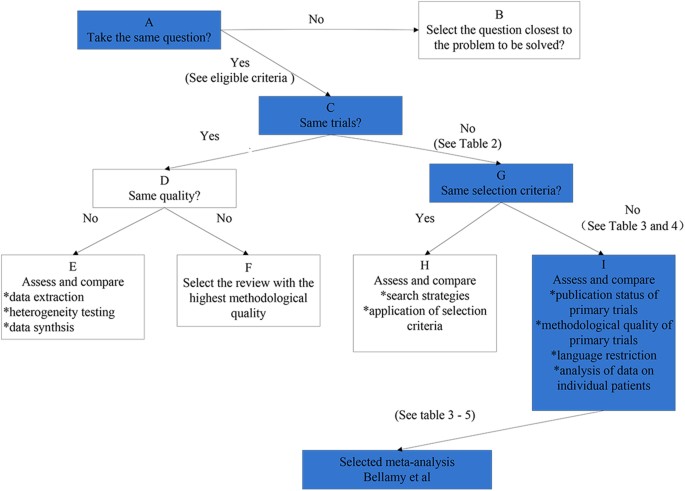
Flow diagram of Jadad decision algorithm.
In fact, our own skin cells actually produce hyaluronic acid naturally in a bid to maintain moisture levels. But, thanks to pesky ageing and environmental aggressors, to name just a few things flung at our faces on a daily basis, those levels tend to take a bit of a dip.
ELLE Edit: Best Hyaluronic Acid Skincare Products
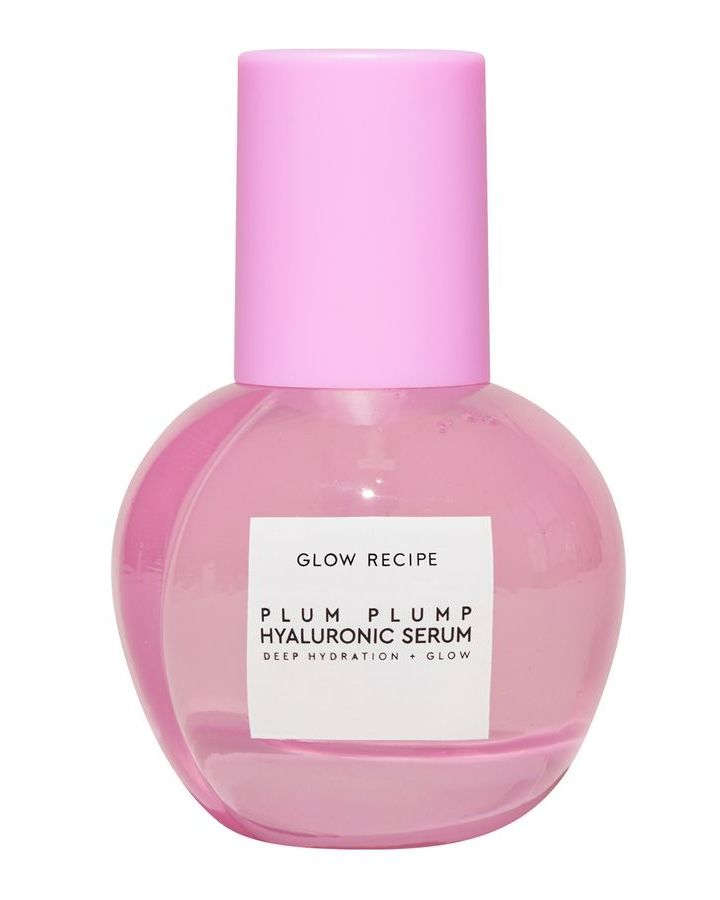
The key ingredient for plumping your skin, Glow Recipe’s pleasingly pink hyaluronic acid serum is named for good reason. Boasting no less than five different weights of HA to penetrate your skin at multiple levels, this ultra lightweight serum will leave your face feeling firmer and bouncier.
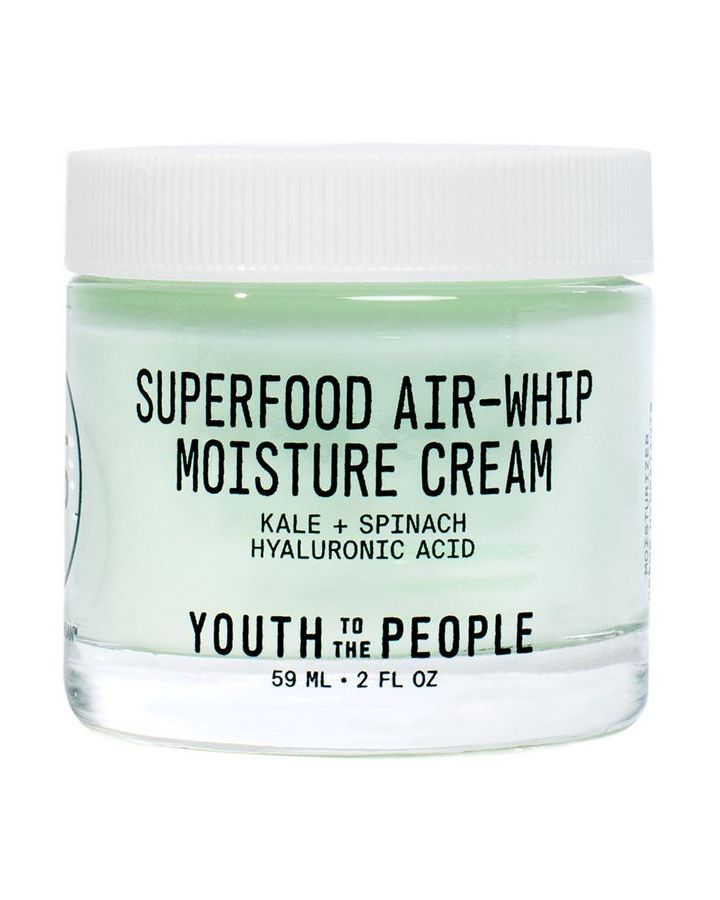
Dedicated to vegan skincare that actually works, Youth To The People’s hyaluronic acid moisturiser combines superfoods kale and spinach with hyaluronic acid to make a refreshing whipped gel cream that sinks into skin in seconds. The best bit? The packaging is totally recyclable so you can be as nice to the planet as you are to your skin.
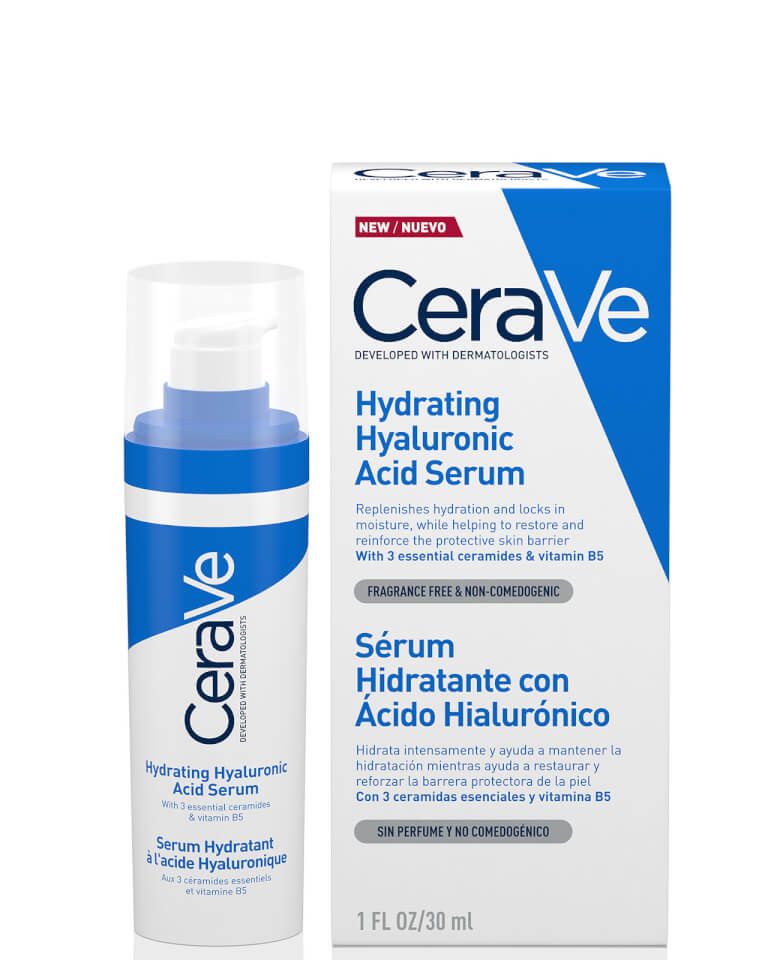
This fragrance-free hyaluronic and vitamin B5 packed serum not only replenishes skins hydration levels but keeps it locked in thanks to the presence of 3 different ceramides.
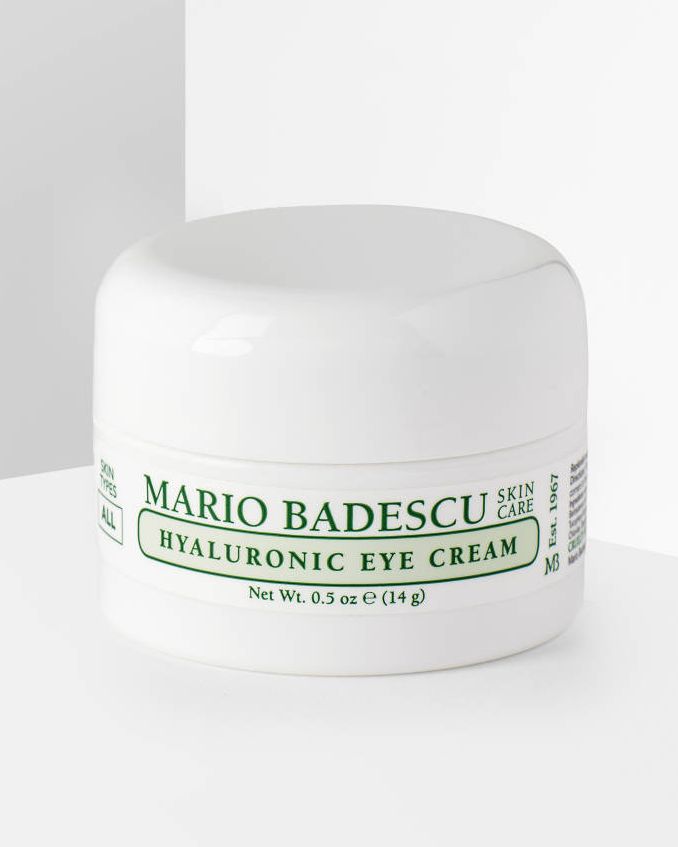
Those in search of a big hyaluronic hit will fall in love with Mario Badescu’s eye cream which has a huge cult following.
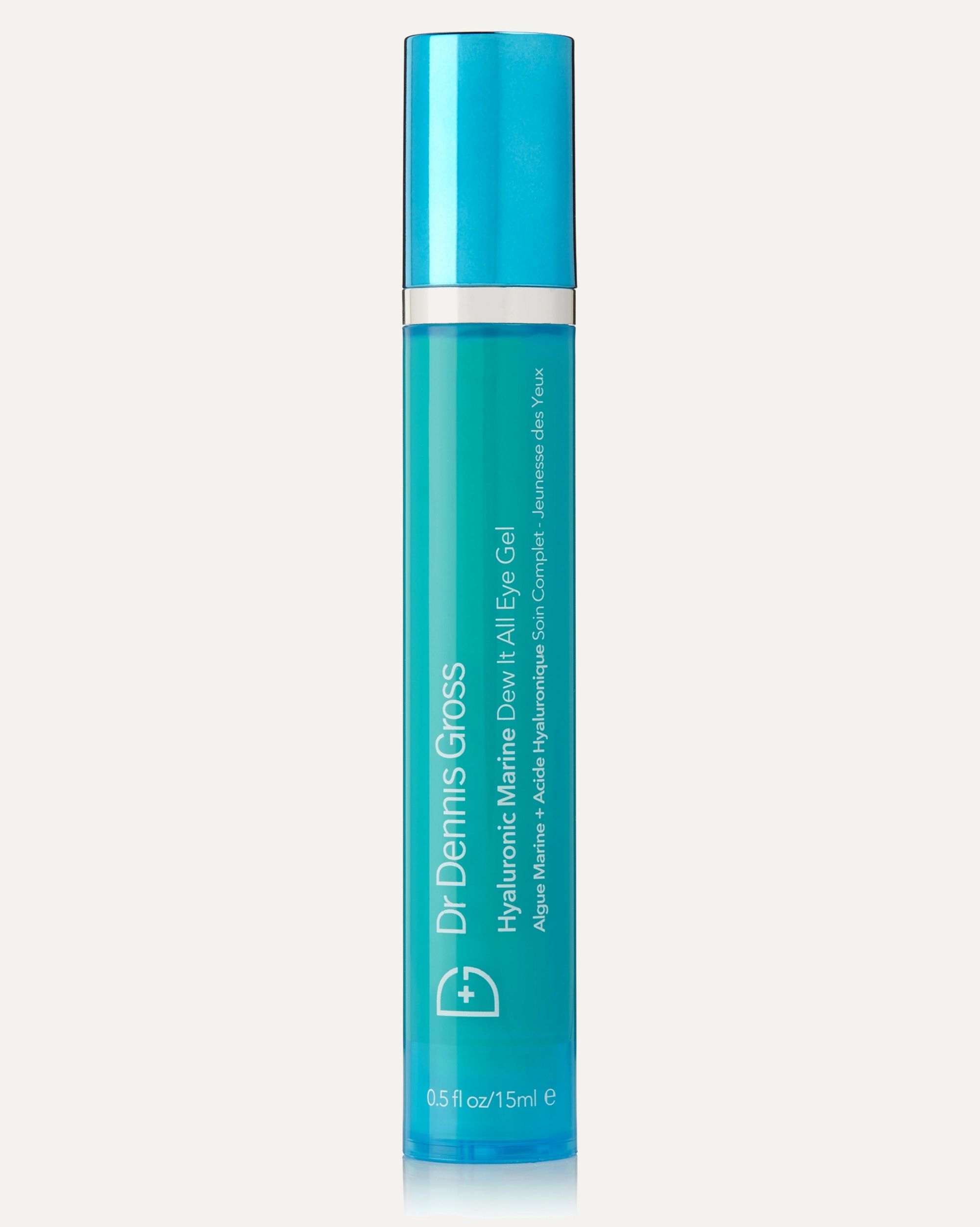
The hyaluronic acid in this Dr Dennis Gross offering cleverly stalls the skin’s natural ageing process so you can say laters to the crows feet.
Zoe Diana Draelos
About this article
Cite this article
Draelos, Z.D., Diaz, I., Namkoong, J. et al. Efficacy Evaluation of a Topical Hyaluronic Acid Serum in Facial Photoaging. Dermatol Ther (Heidelb) 11, 1385–1394 (2021). https://doi.org/10.1007/s13555-021-00566-0
Received : 29 March 2021
Accepted : 10 June 2021
Published : 26 June 2021
Issue Date : August 2021
Share this article
Anyone you share the following link with will be able to read this content: